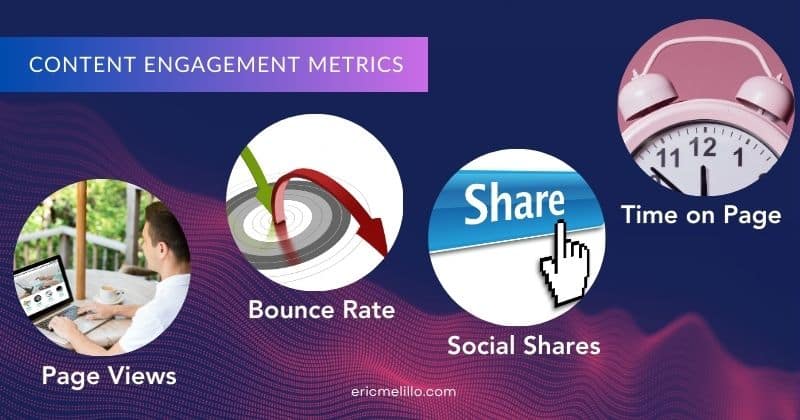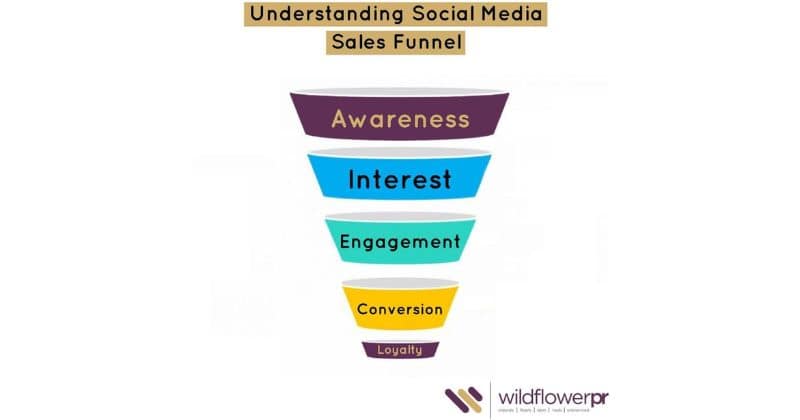Did you know that 55% of visitors spend less than 15 seconds on a webpage? In today’s digital landscape, capturing and retaining audience attention is more challenging than ever. The key to overcoming this hurdle lies in mastering content engagement. Engaging content is the heart of successful online communication, from compelling storytelling to interactive visuals.
We’ll explore actionable strategies for boosting user interaction, fostering meaningful connections, and ultimately driving desired outcomes. Whether you’re a seasoned marketer or just starting your online journey, understanding the dynamics of content engagement is crucial for standing out in the crowded digital space.
Understanding Content Engagement

Key Metrics
Measuring content engagement involves analyzing key metrics that provide valuable insights into how users interact with online content. These content engagement metrics play a crucial role in understanding the effectiveness of digital marketing strategies and optimizing content to engage the audience better.
Key metrics for content engagement include page views, time on page, bounce rate, and social shares. Page views indicate the number of times a particular piece of content has been accessed or viewed by users. Many page views suggest significant interest and interaction with the content. Time on page refers to the average time users spend consuming a specific piece of content. This metric is essential as it reflects user engagement and interest in the material presented.
Bounce rate measures the percentage of visitors who navigate away from a website after viewing only one page. A lower bounce rate indicates higher engagement, as visitors explore multiple pages or spend more time on the site. Social shares represent how often users share content across various social media platforms, indicating its relevance and appeal to the audience.
Analyzing these key metrics provides valuable insights into user behavior and preferences, allowing marketers to tailor their strategies for improved content engagement.
Analyzing Analytics
Utilizing tools like Google Analytics enables businesses to track user behavior patterns and gain comprehensive insights into content engagement. By leveraging analytics tools, organizations can identify popular pieces of content that resonate well with their audience while pinpointing improvement areas.
Analyzing analytics helps understand which types of content generate maximum traction among users based on factors such as click-through rates, conversion rates, and overall user interactions. This data aids in making informed decisions regarding future content creation efforts by focusing on topics that have historically garnered substantial audience attention.
Moreover, insights derived from analytics guide strategic decisions aimed at enhancing content engagement, whether through refining existing materials or developing new ones tailored specifically to meet user demands effectively.
Importance of Content Engagement

Marketing Performance
Content engagement plays a crucial role in determining marketing performance. Users interacting with content are more likely to convert and become customers.
For instance, engaging blog posts or social media content can drive traffic to a website and increase lead generation. By monitoring metrics like click-through rates and time spent on page, businesses can gain valuable insights into the effectiveness of their content engagement strategies.
Effective content engagement not only boosts conversion rates but also enhances brand visibility. When users find value in the content provided by a company, they are more likely to remember the brand and consider it when making purchasing decisions. Creating compelling and interactive content is essential for building brand awareness and loyalty among potential customers.
ROI Enhancement
Enhanced content engagement directly contributes to an improved return on investment (ROI) for marketing efforts. By attracting qualified leads through engaging content, businesses have a higher chance of converting these leads into actual sales. For example, interactive videos or quizzes can capture user attention and encourage them to learn more about a product or service, increasing sales conversions.
Optimizing content for higher engagement can significantly impact overall ROI by ensuring that marketing resources are allocated effectively. Instead of spending resources on generic advertising that may not resonate with the audience, companies focusing on creating engaging content tailor-made for their target market stand a better chance of achieving positive returns on their investments.
Strategies to Increase Engagement
Content Strategy Creation
Crafting a compelling content strategy involves aligning topics with audience interests and preferences. It’s about understanding what your audience is interested in and tailoring your content to meet those needs.
For instance, if you’re targeting young adults, creating engaging video content for platforms like TikTok or Instagram might be more effective than long-form blog posts. A well-defined strategy focuses on creating engaging content that resonates with the target audience through storytelling, interactive elements, or valuable information.
Content strategy creation aims to maximize user interaction and drive meaningful engagements. This means not only attracting attention but also keeping it by providing value.
For example, if you run a cooking website targeting amateur chefs, your content strategy should include easy-to-follow recipes with clear instructions and appealing visuals. Doing so can create an environment where users are passive consumers and active participants who engage with your brand.
User Journey Mapping
Mapping the user journey helps understand touchpoints where engaging content can be delivered. Imagine this as guiding someone through a story – each chapter revealing new details or challenges that keep them engaged until the end of the book. Identifying user intent at different stages of the journey informs the creation of relevant and engaging content tailored to their needs at each step.
Effective user journey mapping ensures seamless integration of engaging content throughout the customer experience. Let’s say you have an e-commerce platform; understanding when customers are most likely to engage with product-related information (such as during initial research or right before making a purchase) allows you to strategically place compelling videos or customer testimonials at those touchpoints.
The Role of Content in Marketing

Nurturing Leads
Engaging content is essential for nurturing leads. Businesses can attract potential customers and guide them through the sales funnel by providing valuable information and addressing pain points. For example, creating blog posts that offer solutions to common problems or sharing informative videos can capture leads’ interest at different stages of their buyer’s journey.
Tailoring content to specific stages of the buyer’s journey is crucial for effective lead nurturing. For instance, educational content such as e-books or webinars may be more suitable for leads in the awareness stage, while case studies or product demos could be beneficial for those in the consideration stage. This targeted approach ensures that content resonates with leads at each step, increasing the likelihood of conversion.
Consistent delivery of engaging content builds trust and credibility with potential customers. When brands consistently provide valuable insights and solutions through blogs, social media posts, or email newsletters, it establishes them as reliable sources within their industry. As a result, leads are more likely to progress through the sales funnel and eventually make a purchase due to this established trust.
Retaining Customers
Engaging existing customers through personalized and relevant content plays a vital role in retaining their loyalty. For example, sending tailored product recommendations based on past purchases or offering exclusive discounts to loyal customers demonstrates appreciation and encourages repeat business.
Providing ongoing value through engaging content fosters long-term relationships with customers. Whether it’s sharing how-to guides related to products they’ve purchased or delivering insightful industry updates via newsletters, consistent engagement keeps existing customers interested and connected to the brand.
Retaining customers heavily relies on consistently delivering high-quality, engaging content that meets their evolving needs. This means staying attuned to customer feedback and market trends to refine content strategies to continuously satisfy and engage existing customers.
Insights from Engagement Data
Strategic Decisions
Analyzing content engagement provides valuable data that drives strategic decisions for future campaigns. By understanding what types of content resonate with the audience, marketers can adjust their strategies to optimize the impact of their initiatives. For example, if a particular blog post or video receives significantly higher engagement levels than others, this insight can inform the creation of similar content in the future.
Moreover, making informed strategic decisions based on engagement trends enables continuous improvement and drives higher content engagement levels. This iterative process allows marketers to refine their approaches and focus on producing content that generates meaningful interactions with their audience.
The ability to adapt marketing strategies based on real-time engagement data is crucial for staying relevant and impactful in today’s dynamic digital landscape.
Target Audience Analysis
Understanding the target audience’s demographics, behaviors, and preferences is essential for creating engaging content. When analyzing audience data, marketers gain insights into their potential customers and what they care about. For instance, by examining social media analytics or website traffic patterns, businesses can identify which demographic groups are most responsive to specific types of content.
This knowledge guides the development of tailored messaging that resonates with specific segments within the target audience. By aligning content with audience interests, companies maximize their potential for engagement because it directly addresses what matters most to consumers within different market segments.
Email Engagement Tactics

Email Sign-Ups
Encouraging email sign-ups is crucial for building a strong connection with your audience. Offering engaging incentives, such as exclusive offers or valuable resources, can significantly boost the number of subscribers.
For instance, providing a free e-book or a discount on their first purchase can entice visitors to subscribe to your emails. You can increase email sign-up rates by leveraging engaging opt-in forms and compelling calls-to-action. These elements should be visually appealing and convey the benefits of subscribing.
Building an engaged subscriber base through email sign-ups facilitates ongoing communication and relationship building. Once you have individuals subscribed to your emails, consistently providing value through your content is essential. This could include sharing informative articles, offering special promotions exclusively for subscribers, or sending personalized recommendations based on their interests.
Open Rate Improvement
Crafting captivating subject lines is key to improving email open rates. Subject lines should be concise yet attention-grabbing, conveying the essence of the email’s content while piquing curiosity. For example, phrases like “Don’t miss out” or “Exclusive offer inside” can create a sense of urgency and excitement that encourages recipients to open the email.
Delivering relevant and valuable content within the emails themselves also plays a significant role in enhancing open rates. If recipients consistently find useful information or enticing offers when they open your emails, they are more likely to continue doing so in the future.
Personalizing email communications based on user preferences positively impacts open rates as well. Tailoring content based on previous interactions with your brand or specific demographic information helps establish a deeper connection with recipients.
Continuous optimization of email content contributes to sustained improvements in open rates over time. Regularly analyzing engagement data allows you to identify trends and patterns that indicate what type of content resonates most with your audience.
Social Media and Video Engagement
Platform Utilization
Leveraging diverse social media platforms, blogs, and video channels expands opportunities for engaging audiences across multiple channels. Each platform requires tailored approaches to maximize user interaction with the provided content. Strategic utilization of platforms amplifies reach and fosters diverse forms of engagement.
For instance, visually appealing images or short videos on social media platforms like Instagram tend to attract more engagement than lengthy text-based posts. On the other hand, blog posts allow for more in-depth exploration of topics, catering to an audience seeking detailed information. By understanding the unique characteristics of each platform, content creators can effectively tailor their materials to resonate with specific audience preferences.
Furthermore, utilizing a mix of different platforms allows for a broader reach as it caters to varying demographics and user behaviors. For example, while younger audiences might be more active on TikTok or Snapchat, professionals, and businesses often engage through LinkedIn due to its focus on career-related content.
Video Metrics Analysis
Video metrics analysis evaluates watch time, completion rates, and viewer interactions to gauge audience engagement levels. Understanding video performance metrics guides adjustments to optimize viewer engagement and retention. Video analytics inform decisions regarding video length, format, and storytelling techniques for enhanced engagement.
Analyzing video metrics such as average view duration or drop-off points within a video clip helps creators identify areas where viewers lose interest or disengage from the content. This insight enables them to make necessary adjustments in pacing or visual elements that could enhance overall engagement.
Tracking completion rates provides valuable data about how many viewers watched a video until the end. Creators can use this information when crafting future videos by replicating successful elements that retain viewers’ attention throughout the entire duration.
Benefits of High Engagement Content

Increasing User Interaction
Encouraging comments, shares, and likes through interactive elements within the content elevates user interaction levels. By incorporating engaging questions or thought-provoking prompts, creators can prompt their audience to participate in discussions and share their opinions actively. For instance, a cooking blog might ask its readers to share their favorite recipes or cooking tips in the comments section.
Implementing polls, quizzes, or surveys within the content stimulates active participation from users. These tools provide an opportunity for audiences to engage with the material and offer valuable insights into their preferences and interests.
Fostering a sense of community through user-generated contributions enhances overall interaction with the content. When users feel their input is valued and appreciated, they are likelier to engage with future posts and become loyal followers.
Expanding Audience Reach
Creating shareable, valuable, and relatable content broadens its reach across diverse audience segments. By crafting content that resonates with different demographics or addresses common pain points, creators can attract a wider range of viewers more likely to engage with the material.
Collaborating with influencers or partners amplifies exposure to new audiences, driving increased engagement opportunities. For example, partnering with a popular social media figure relevant to your niche can introduce your brand’s content to a new set of potential followers who may be more inclined to interact due to the influencer’s endorsement.
Employing SEO strategies to enhance discoverability extends the reach of engaging content to wider audiences. Optimizing keywords in titles and descriptions helps ensure that high-quality, engaging pieces appear prominently in search results when users look for related topics.
Building Community through Content

Meeting Customer Expectations
Meeting customer expectations is crucial for building a strong community through content. By addressing pain points and offering solutions, brands can establish trust and satisfaction. For example, a skincare company can create engaging content that addresses common skin issues and provides practical improvement tips. This not only meets the expectations of customers seeking skincare advice but also positions the brand as a reliable source of information.
Consistently exceeding customer expectations with engaging experiences reinforces brand credibility. When a fitness brand consistently delivers high-quality workout videos, it exceeds the audience’s expectations for valuable content, increasing trust in the brand’s expertise.
Adapting to evolving customer preferences ensures that delivered content remains relevant and impactful. For instance, an online retailer may shift from traditional product advertisements to interactive storytelling to align with changing consumer preferences.
Relationship Building
Fostering meaningful connections through consistent delivery of valuable, engaging experiences is essential for effective relationship building via content. By prioritizing authentic interactions in its social media posts and blog articles, a pet care brand can cultivate genuine connections with its audience members who are passionate about animals.
Engaged audiences are likelier to become brand advocates, contributing to organic growth through word-of-mouth referrals. When customers feel emotionally connected to a brand due to its captivating storytelling or helpful tutorials, they naturally share their positive experiences with friends and family.
Prioritizing relationship building through authentic interactions nurtures long-term loyalty among customers and followers. A food delivery service that regularly engages with its audience by sharing user-generated recipes or hosting live Q&A sessions demonstrates a commitment to fostering meaningful relationships beyond mere transactions.
Final Remarks
You’ve now discovered the ins and outs of content engagement, from its significance in marketing to effective strategies for boosting it. Remember, content engagement isn’t just about numbers; it’s about building a community and fostering meaningful connections with your audience. You can create high-engagement content that resonates with your audience by leveraging insights from engagement data, optimizing email tactics, and harnessing the power of social media and video.
Now, it’s time to put these insights into action. Take a deep dive into your content strategy, implement your learned tactics, and start cultivating a more engaged audience. Keep experimenting, analyzing the results, and refining your approach. With dedication and creativity, you’ll see the impact of heightened content engagement on your brand’s success.
FAQs
What does engage with the content mean?
Engaging with content refers to the actions users take to interact with online material. This includes reading, clicking on links, watching videos, leaving comments, and sharing on social platforms. High engagement indicates relevance and value, influencing both user experience and search engine rankings.
Why is engaging content important?
Engaging content is crucial for attracting and retaining audience attention. It enhances user experience, encourages interaction, and increases time spent on the site. This leads to improved search engine rankings, as search algorithms prioritize content that engages and satisfies user intent. Engaging content also boosts sharing and return visits, amplifying online visibility.
How to measure content engagement?
Measuring content engagement involves tracking key metrics like page views, time on page, bounce rate, social shares, and comments. Analytics tools can provide insights into how users interact with content. High engagement is indicated by longer visit durations, frequent interactions, and social sharing, reflecting content’s relevance and appeal to the audience.
How can content be engaging?
Content becomes engaging by being informative, relevant, and tailored to the audience’s interests. Incorporating multimedia elements like images, videos, and infographics enhances appeal. Interactive features such as quizzes or polls increase engagement. Consistently updating content to remain current and addressing user queries directly also contributes to higher engagement levels.
What are some strategies to increase engagement?
Strategies to increase engagement include creating high-quality, relevant content that addresses user queries, using eye-catching visuals, and interactive elements like polls or quizzes. Regularly updating content, optimizing for mobile users, and encouraging social sharing also enhance engagement. Personalizing content and enabling comments for user interaction are effective as well.



